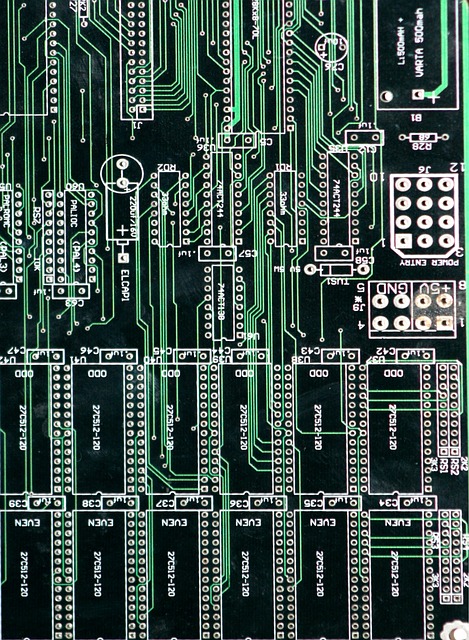# The Role of AI Technology in Shaping Sustainable Solutions for a Greener Future
As the world grapples with the escalating effects of climate change, the urgency for sustainable solutions has never been more pronounced. In this context, artificial intelligence (AI) emerges as a transformative force capable of driving significant advancements in sustainability. By harnessing the power of AI technologies, industries, governments, and communities can develop innovative strategies to reduce environmental impact and promote a greener future. This article explores the multifaceted role of AI in fostering sustainable solutions across various sectors.
## AI-Driven Energy Efficiency
Energy consumption remains one of the primary contributors to environmental degradation. To combat this issue, AI technologies are being deployed to enhance energy efficiency in both residential and industrial settings. One of the most notable applications is in smart grids, where AI algorithms analyze vast amounts of data to optimize energy distribution. By predicting energy demand and adjusting supply accordingly, smart grids reduce waste and enhance reliability.
Moreover, AI is revolutionizing how buildings manage energy usage. Intelligent systems powered by machine learning can analyze patterns in occupancy and environmental conditions to adjust heating, cooling, and lighting automatically. These systems not only lower energy bills for consumers but also significantly decrease carbon emissions. For instance, a study by the Lawrence Berkeley National Laboratory found that AI-enabled building management systems can reduce energy consumption by up to 30%.
In addition to optimizing existing infrastructure, AI facilitates the integration of renewable energy sources into the grid. By forecasting weather patterns and energy generation from solar and wind sources, AI helps utilities balance supply and demand more effectively. This capability is crucial as the world transitions to cleaner energy sources, ensuring that fluctuations in renewable energy generation do not compromise grid stability.
## Sustainable Agriculture Through Precision Farming
Agriculture is another sector where AI technology is making substantial contributions to sustainability. Traditional farming methods often lead to overuse of water, fertilizers, and pesticides, resulting in soil degradation and water contamination. In contrast, precision farming—enabled by AI—offers a more sustainable approach. By utilizing data analytics, machine learning, and remote sensing technologies, farmers can make informed decisions that enhance productivity while minimizing environmental impact.
One of the key applications of AI in agriculture is crop monitoring. Through satellite imagery and drones equipped with AI-powered analytics, farmers can assess crop health, identify pest infestations, and evaluate soil conditions in real-time. This level of insight allows for targeted interventions, reducing the need for chemical inputs and conserving resources. For example, a study published in the journal *Nature Sustainability* highlighted that AI-driven precision agriculture could reduce nitrogen fertilizer use by up to 20% without compromising yields.
Furthermore, AI can optimize irrigation practices, which are critical in regions facing water scarcity. By analyzing soil moisture data and weather forecasts, AI systems can determine the optimal times and amounts of water to apply, thus conserving this precious resource. The result is not only enhanced crop yield but also a significant reduction in water waste, contributing to more sustainable agricultural practices.
## Waste Management and Circular Economy
The challenge of waste management is a significant hurdle in the quest for sustainability. With the global population continuing to rise, effective waste reduction and recycling strategies are essential. AI technology plays a pivotal role in transforming waste management systems, promoting a circular economy that minimizes waste and maximizes resource recovery.
One innovative application of AI in waste management is the development of smart sorting systems. These systems employ computer vision and machine learning algorithms to identify and sort recyclable materials from general waste. By automating the sorting process, facilities can significantly improve recycling rates and reduce contamination, which is a common issue in traditional recycling methods. For instance, a pilot program in San Francisco utilizing AI-driven sorting technology achieved a recycling rate increase of over 25%.
Additionally, AI can enhance waste collection logistics. By analyzing data on waste generation patterns, AI algorithms can optimize collection routes and schedules, reducing fuel consumption and greenhouse gas emissions associated with waste transport. This not only leads to cost savings for municipalities but also contributes to a lower carbon footprint.
The concept of a circular economy is further supported by AI’s ability to facilitate product life cycle analysis. By evaluating the environmental impact of products from production to disposal, businesses can identify opportunities to redesign products for longevity, repairability, and recyclability. This shift towards sustainable product design is essential for reducing overall waste and conserving resources in the long term.
## Conclusion: A Collaborative Future
The integration of AI technology into various sectors offers a promising pathway toward achieving a more sustainable future. From enhancing energy efficiency and revolutionizing agriculture to transforming waste management practices, AI is proving to be a vital tool in addressing the pressing challenges of climate change and environmental degradation. However, the successful implementation of these technologies requires collaboration among stakeholders, including governments, businesses, and communities.
In order to maximize the benefits of AI for sustainability, it is crucial to invest in research and development, as well as in education and training for the workforce. Policymakers must create supportive frameworks that encourage innovation while ensuring ethical considerations are addressed. As we move forward, embracing the potential of AI technology will be essential in shaping a greener, more sustainable future for generations to come. By leveraging the unique capabilities of AI, we can not only mitigate the impacts of climate change but also foster a world where economic growth and environmental stewardship go hand in hand.











